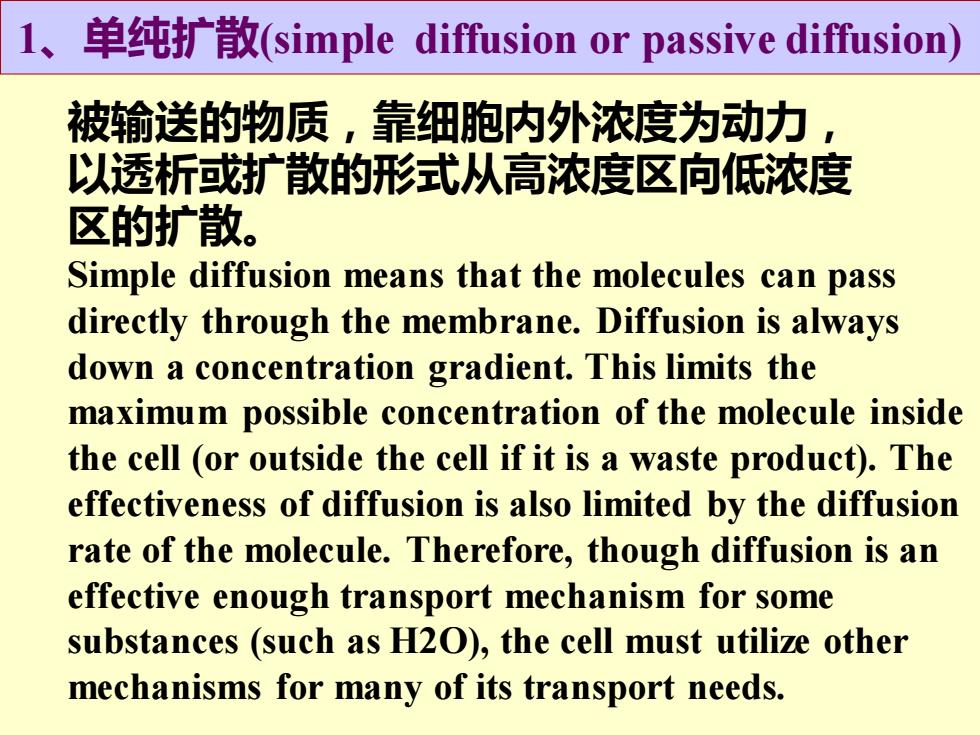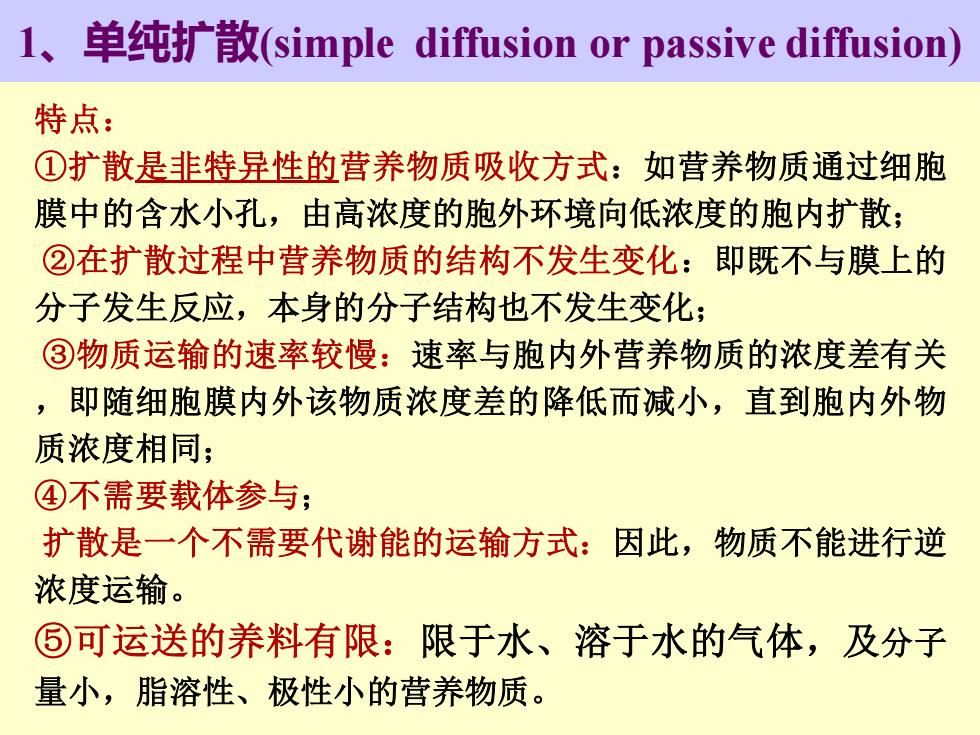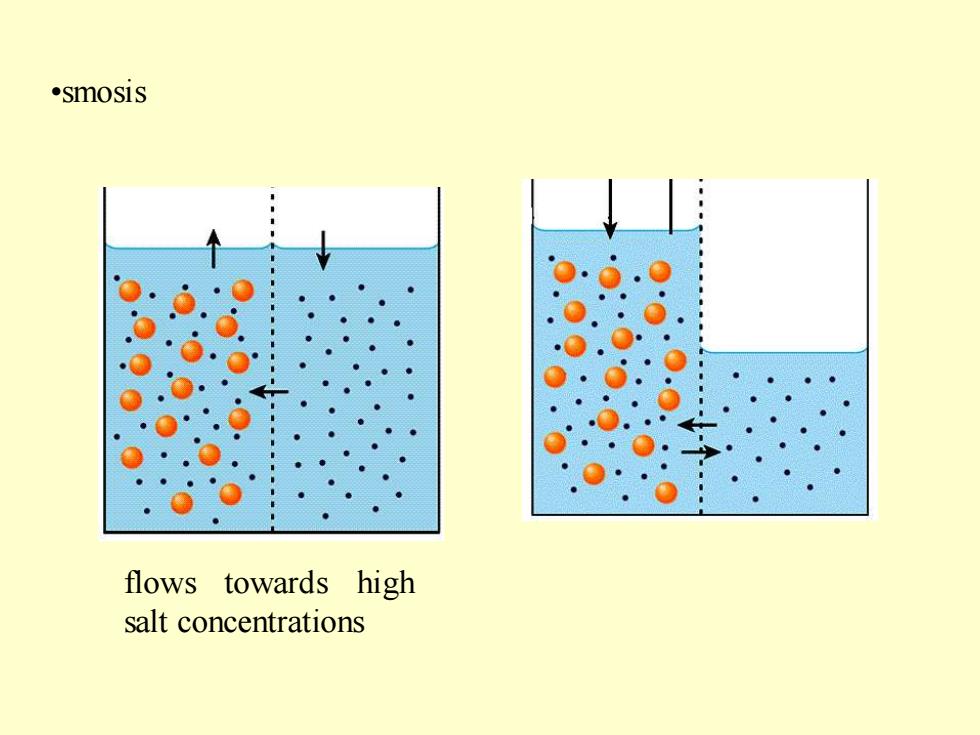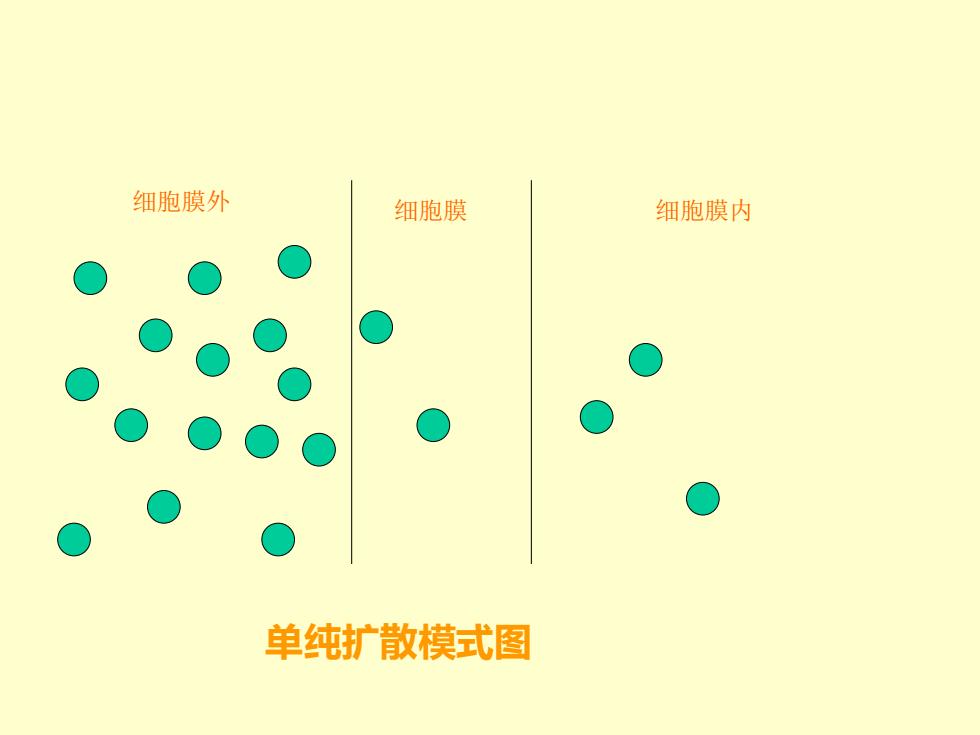
微生物吸收营养物质的方式
微生物吸收营养物质的方式

1、单纯扩散(simple diffusion or passive diffusion) 被输送的物质,靠细胞内外浓度为动力, 以透析或扩散的形式从高浓度区向低浓度 区的扩散。 Simple diffusion means that the molecules can pass directly through the membrane. Diffusion is always down a concentration gradient. This limits the maximum possible concentration of the molecule inside the cell (or outside the cell if it is a waste product). The effectiveness of diffusion is also limited by the diffusion rate of the molecule. Therefore, though diffusion is an effective enough transport mechanism for some substances (such as H2O), the cell must utilize other mechanisms for many of its transport needs
1、单纯扩散(simple diffusion or passive diffusion) 被输送的物质,靠细胞内外浓度为动力, 以透析或扩散的形式从高浓度区向低浓度 区的扩散。 Simple diffusion means that the molecules can pass directly through the membrane. Diffusion is always down a concentration gradient. This limits the maximum possible concentration of the molecule inside the cell (or outside the cell if it is a waste product). The effectiveness of diffusion is also limited by the diffusion rate of the molecule. Therefore, though diffusion is an effective enough transport mechanism for some substances (such as H2O), the cell must utilize other mechanisms for many of its transport needs

1、单纯扩散(simple diffusion or passive diffusion) 特点: ①扩散是非特异性的营养物质吸收方式:如营养物质通过细胞 膜中的含水小孔,由高浓度的胞外环境向低浓度的胞内扩散; ②在扩散过程中营养物质的结构不发生变化:即既不与膜上的 分子发生反应,本身的分子结构也不发生变化; ③物质运输的速率较慢:速率与胞内外营养物质的浓度差有关 ,即随细胞膜内外该物质浓度差的降低而减小,直到胞内外物 质浓度相同; ④不需要载体参与; 扩散是一个不需要代谢能的运输方式:因此,物质不能进行逆 浓度运输。 ⑤可运送的养料有限:限于水、溶于水的气体,及分子 量小,脂溶性、极性小的营养物质
1、单纯扩散(simple diffusion or passive diffusion) 特点: ①扩散是非特异性的营养物质吸收方式:如营养物质通过细胞 膜中的含水小孔,由高浓度的胞外环境向低浓度的胞内扩散; ②在扩散过程中营养物质的结构不发生变化:即既不与膜上的 分子发生反应,本身的分子结构也不发生变化; ③物质运输的速率较慢:速率与胞内外营养物质的浓度差有关 ,即随细胞膜内外该物质浓度差的降低而减小,直到胞内外物 质浓度相同; ④不需要载体参与; 扩散是一个不需要代谢能的运输方式:因此,物质不能进行逆 浓度运输。 ⑤可运送的养料有限:限于水、溶于水的气体,及分子 量小,脂溶性、极性小的营养物质

•smosis flows towards high salt concentrations
•smosis flows towards high salt concentrations

单纯扩散模式图 细胞膜外 细胞膜 细胞膜内
单纯扩散模式图 细胞膜外 细胞膜 细胞膜内